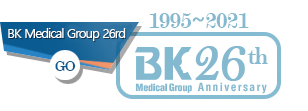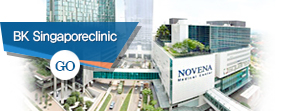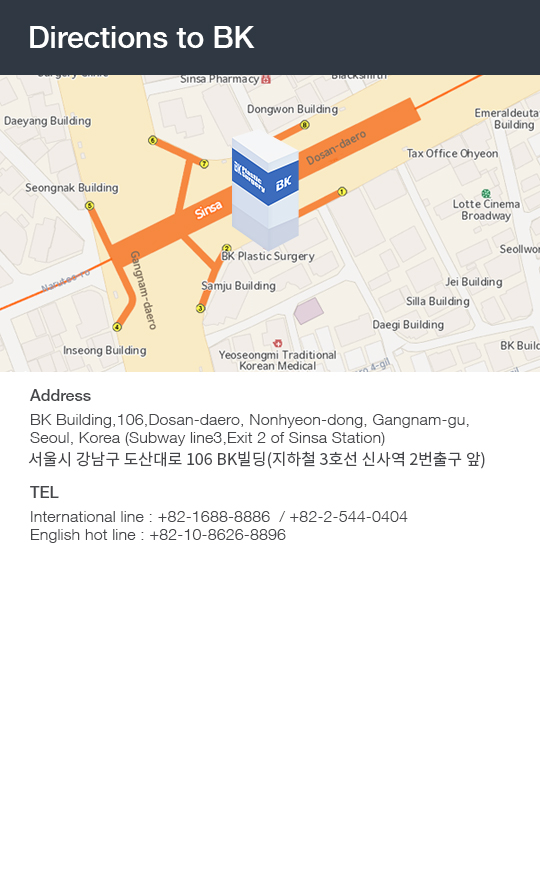

- ■ Autologous Cartilages
- Artificial implants for the purpose of revisional surgery can result in operative failures,
infection, or deformations. Hence, use of autologous cartilages are recommended.
- ■ Tissue Preservation
- It is important to minimize separation of tissues
during
revision in order to preserve them.
This reduces recovery time after surgery and also
maintain the natural nose
shape by minimizing
tissue damage.
- ■ Understanding Cause
- Revisional surgery is a very delicate and difficult
operation even at the hands of experienced surgeons.
Therefore, It is important to be able to understand the
cause of failure from previous surgery in order to
complete the procedure safely and successfully.
- Revisional surgery is generally recommended 6 months
after the preceding surgery when tissues become tender.
- However, a revision of relatively simple surgery such as nose
bridge
augmentation, can be performed within 3 months. In case of infection
,
revisions should be postponed until implants are removed and
inflammation is
soothed. Revisional surgery must be approached with
caution since it is likely
to damage tissues more than the first surgery.
It is also important to note that an excessive adjustment can result in
another revision.

- ■ Contracture on Nose Tip
- Symptom
- Neglecting infection after rhinoplastic surgery leaves
scar on inner structure that causes hardening of nose.
Nose may become short and stiff if not treated properly.
- Treatment
- After infection-causing implants are replaced with
autologus tissues(corium, fat, or rib cartilage), the nose
tip is reshaped using autologus septal cartilage or rib
cartilage.
- ■ Imbalance in Nose and Face
- Symptom
- Lack of aesthetic consideration often results in a visual
imbalance in nose and face, Most patients are unsatisfied
with such results and revision should be considered.
- Treatment
- Revisional surgery, in this case, requires precise
techniques to carry out size reduction or relocation
of implants.
- ■ Deviated Implant
- Symptom
- Nose appears bent or unnatural when
the implant deviates from the nose
bridge.
- Treatment
- A new proper implant replaces
the older one. The site of misplaced
implant must be treated as well.
- ■ Allergic Reaction to Silicone
- Symptom
- Patients who were unaware of the fact
that they were allergic to silicone yet
received procedure may experience
allergic reaction such as prolonged
swelling, and fluid retention around the
nose bridge .
- Treatment
- Although allergic reactions are not easily
anticipated, any silicone implants are
immediately removed and replaced
with
autologous tissues(corium, fat,
or rib
cartilage) upon detection of the
symptoms.
- ■ Nose Tip Deformation Caused by L– Shaped Silicone
- Symptom
- when L-shaped silicone is placed on the nose tip,
the cartilage
can be deformed with pressure.
The skin on the tip may
become reddish and transplant
that the implant would be
visible or even protruding.
- Treatment
- L-shaped silicone is replaced with another implant that
would inserted only into the nose bridge area, and the tip is
operated with autologus cartilage. The skin affected by
deformation may be further damaged unless reinforced
by autologus cartilage or alloplastic dermis.

HOME >
Nose Surgery>
Types of Nose Surgery Revisional Nose Surgery
























































 HOME >
Nose Surgery>
HOME >
Nose Surgery>





